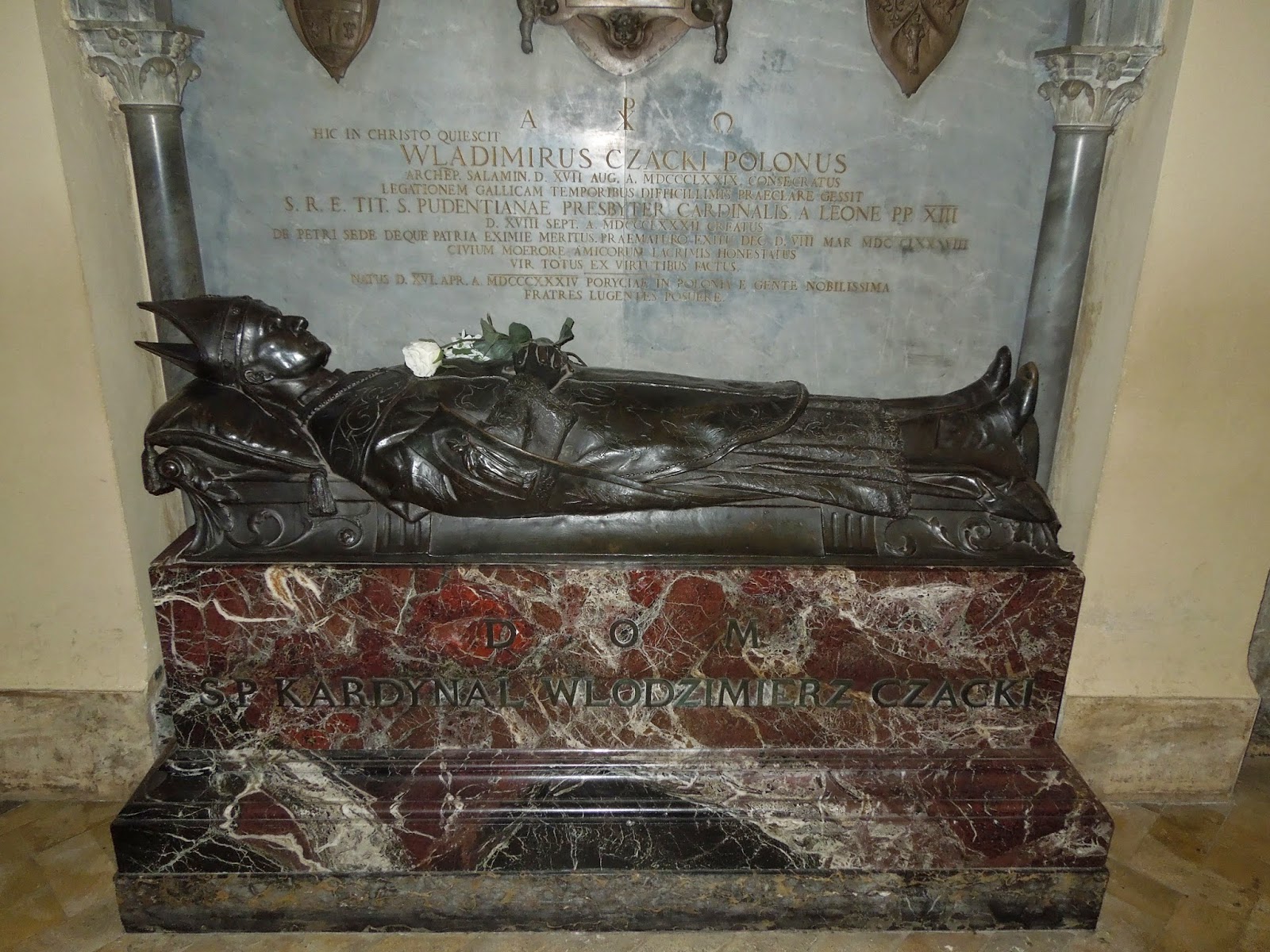The women's soccer team is on campus for their spring break. Tonight I get to attend a Roma soccer match versus one of their arch enemies, Juventus. It promises to be an exciting match. More about that later. The students had the day off today. I decided to use the day to explore an area of Rome known as Esquiline Hill, or Esquilino. The Esquiline is very near the train station Termini which is perfect because we will meet at the train station at 6P to head over to the soccer match.
The Esquiline is the largest and highest of Rome's seven hills. The essential character of the place has persisted throughout two millennia; it is still one of the poorest and most culturally diverse areas of the city.
The area's main interest lies in its churches. I have been to Esquiline on both of my previous trips to Rome, but most of that time was spent at two specific churches, Santa Maria Maggiore and San Pietro in Vincoli. I have included pictures and comments about both in my earlier blogs. Today I was in search of some of the smaller churches in the area as well as some of the physical landmarks from Roman times.
The church pictured above is Santa Pudenziana. It was interesting to me for a number of reasons. First it is sinking. The entrance is about twenty feet below street level. Second, the legend has it a Roman senator named Pudens befriended St. Peter and allowed him to stay with him in his home on this site. There was confusion about the name and for years it was thought that a daughter of Pudens named Pudentiana existed and the church was named after her. Turns out there was no such person and in 1969 the Vatican declared her sainthood invalid. One of only a few "saints" whose sainthood was revoked. The church was allowed to keep the name. And thirdly, it houses the tomb of a Polish cardinal.
The next little church I wandered into was Santa Prassede. The legend was that Prassede and Pudenziana were sisters, daughters of the Roman senator Pudens. Although there are mosaics depicting the sisters with St. Peter and St. Paul with their arm around them, the story has not been supported and she too was stripped of her sainthood.
The church had some of the most elaborate, glittering, jewel-colored mosaics I have seen in Rome.
The other major claim to fame of this church is pictured below. This is a section of a column brought back from Jerusalem. Allegedly the very same column Christ was bound and flogged. Although the sainthood of the sisters has been called into question. No one has disputed the column story.
The church pictured below is San Martino ai Monti. Christians hyave been worshipping on this site since the 3rd century when they used to meet in the house of a man named Equitius.
The guide books suggest asking the sacristan for permission to go beneath the church under the alter to see the remains of the house. See below.
Other sites in the area included parts of the Domus Aurea, Nero's golden house. The palace he built for himself was said to be about 25 times the size of the coliseum.
The Arch of Gallienus.
The remains of the auditorium of Maecenas are below
The little church pictured below is San Sebastian. One of the few churches in Rome where you can still attend mass spoken entirely in Polish.
Of course there is a picture of the "black Madonna" above the altar. The original icon is in San Giovanni in Lateran.
The remains of Santa Bibiana, the martyr are said to be stored in the urn you see below the altar.
Other sites included the remains of Sette Sale, the cistern used to supply waters to the baths of Trajan.
Remains of the baths themselves
I took this picture only because I was fascinated by the architecture. One sees these kinds of odd shaped structures all over Rome.



.jpg)
.jpg)
.jpg)
















No comments:
Post a Comment